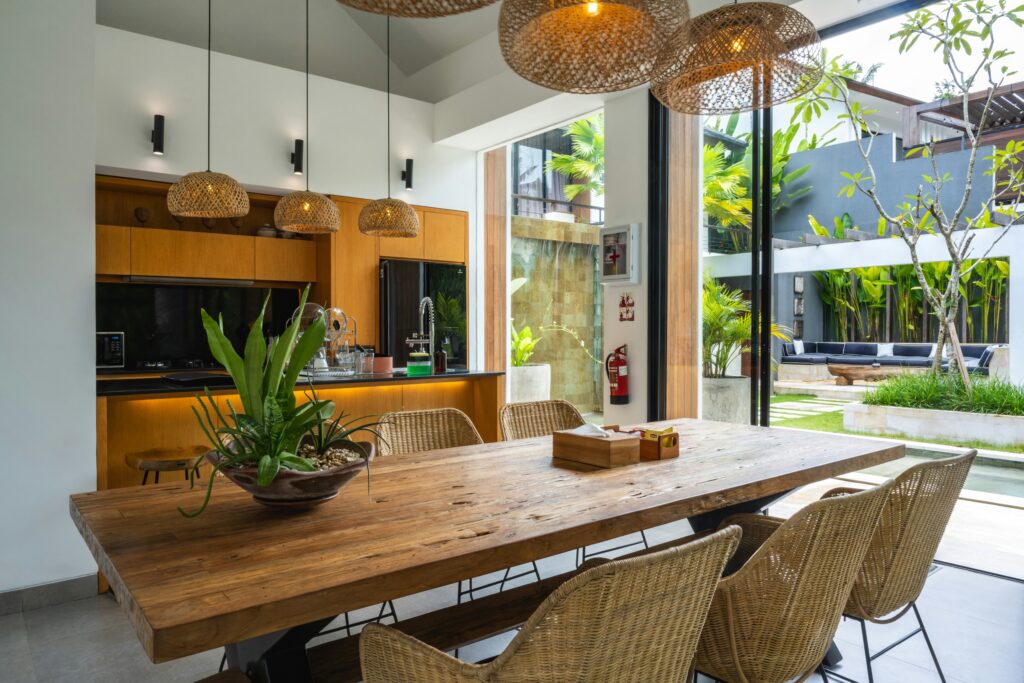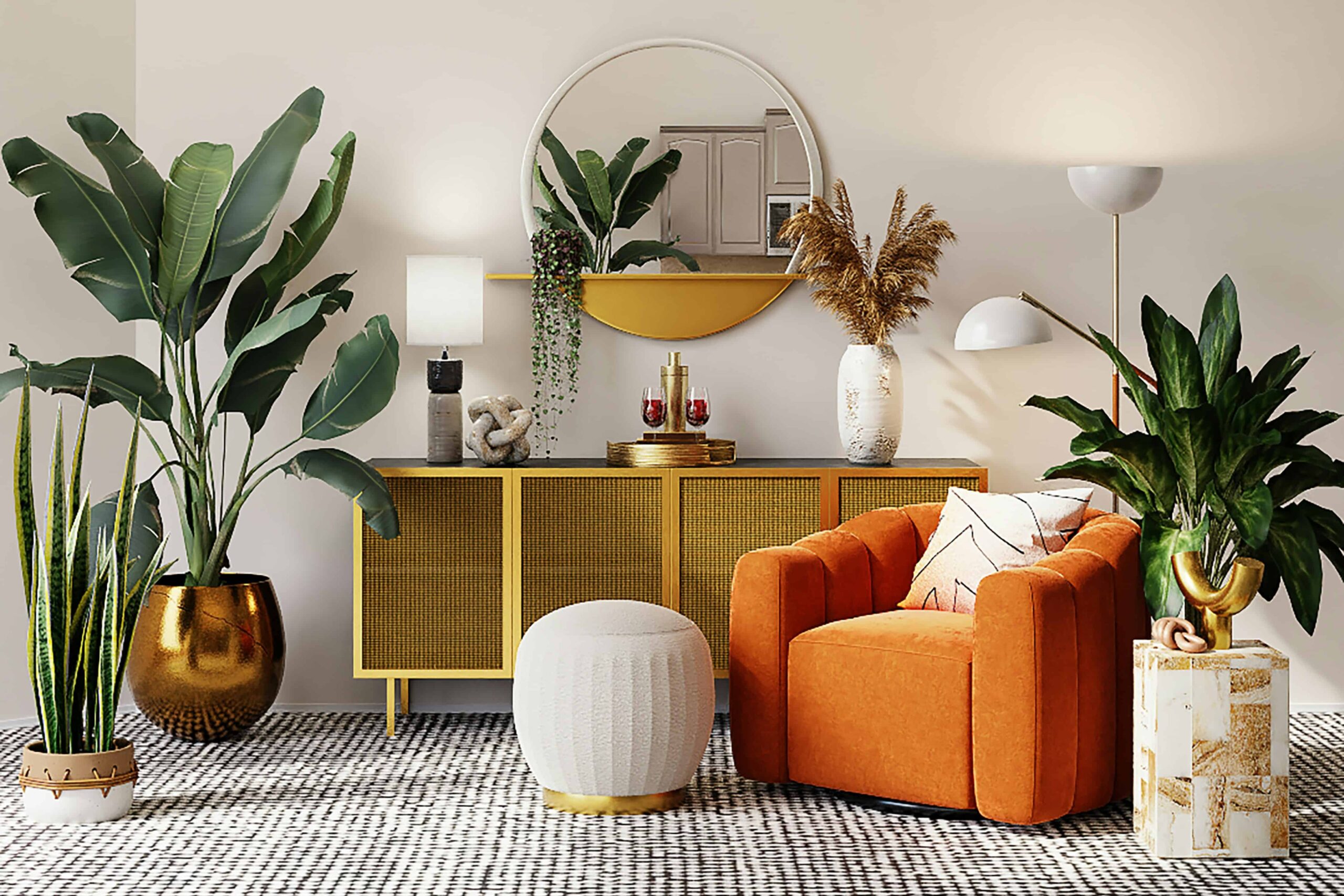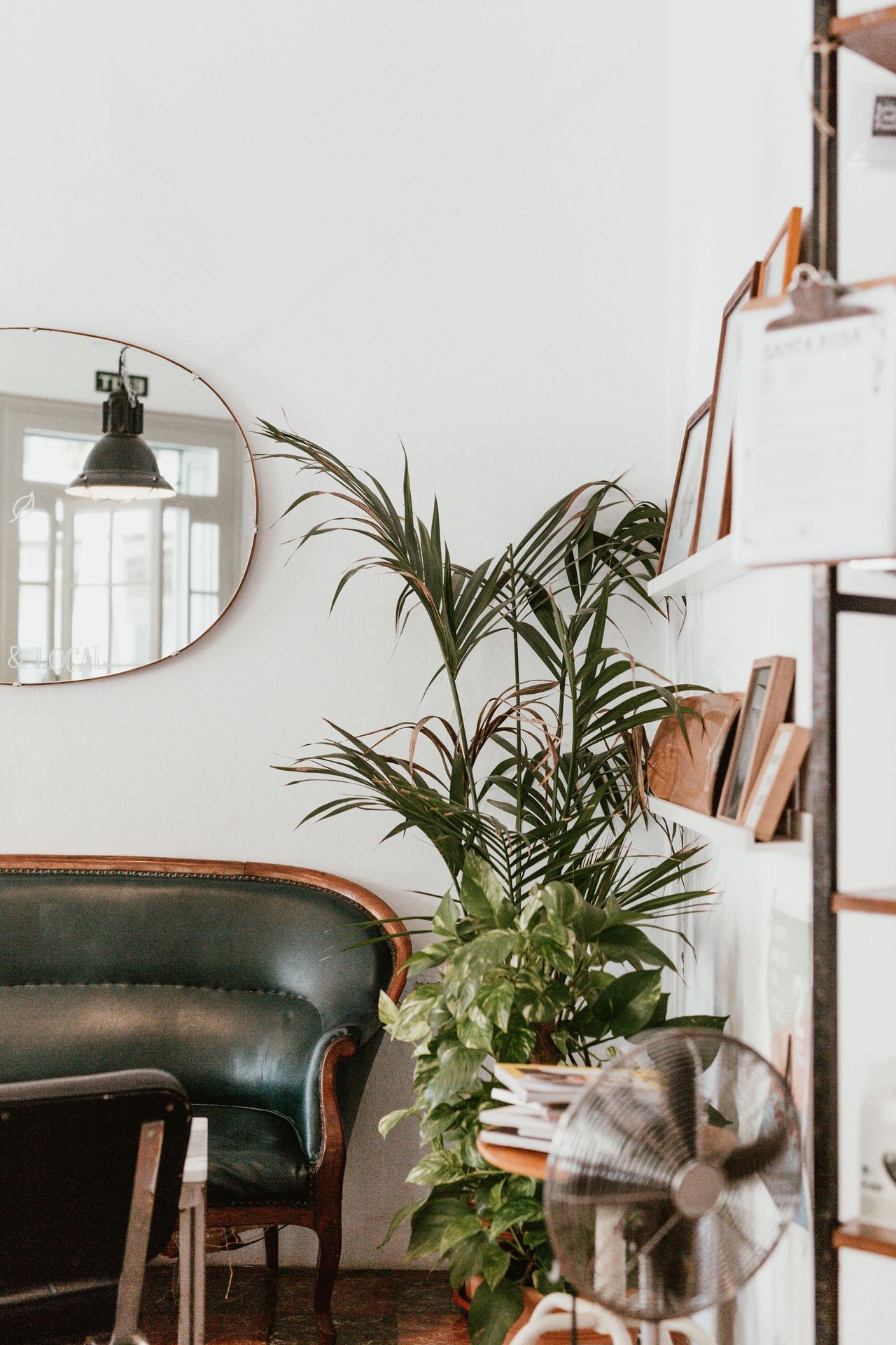By Mercedes Quintanilla
We’ve never needed the healing powers of nature more than we do now — and not just in response to the challenges of recent years. In a world of over-stimulation, digital noise, and artificial environments, the soul longs for something ancient, grounding, and real.
This is where biophilic design becomes essential.
Biophilia is more than a trend — it’s a return to what we instinctively know: that the natural world restores us. Spaces infused with biophilic elements have been shown to reduce stress, support immunity, enhance focus, and even spark creativity. But beyond the data, they simply feel better.
Here’s how you can begin creating a more restorative, biophilic environment at home — one that supports not just your senses, but your well-being.

1. Light as Medicine: Invite the Outdoors In
Natural light is foundational to biophilic design. It regulates our circadian rhythm, boosts mood and productivity, and helps us connect to time and place.
Enhance natural light in your home with:
- Sheer, airy window treatments
- Strategically placed mirrors that reflect outdoor views
- Light-toned color palettes
- Open layouts that allow light to travel
- Furniture arrangements that don’t block sunlight
The goal: spaces that feel alive, expansive, and attuned to the rhythm of the day.
2. A Palette of Nature: Choose Restorative Colors
Color is more than aesthetic — it’s sensory psychology.
- Blues calm the nervous system, much like the sky and sea that inspire them.
- Greens reconnect us with renewal and growth, subtly regulating the body’s stress response.
- Earth tones — from soft terracotta to rich browns — evoke warmth, grounding, and familiarity.
Together, they create emotional spaciousness. They make a home feel like an exhale.
3. Organic Forms: Let Nature Shape the Space
In nature, nothing is rigid. There are no sharp corners in the forest. We soften a space by embracing organic forms — curved edges, asymmetry, and natural irregularity.
You might incorporate this through:
- Curved furniture made of natural wood
- Sculptural lighting crafted from hand-blown glass or organic materials
- Rugs and accessories that mimic natural forms or textures
These details restore flow — not just visually, but emotionally.

4. Living Beauty: Bring in Plants That Support Life
Plants are not decoration. They are energy, presence, and partnership.
Beyond aesthetics, they clean the air, regulate humidity, and reconnect us to our natural pace. Choose indoor species that are both beautiful and easy to maintain, like:
- Monstera Deliciosa
- Sansevieria
- Peace Lily
- Ficus Benjamina
- Aloe Vera
- Anthurium
- Succulents and Jade
Each brings its own language — bold, delicate, architectural, fluid. Choose the ones that speak to your spirit and the light of your space.
A Final Truth
Biophilic design isn’t about placing a few plants on a shelf. It’s about creating environments that nourish life — not just aesthetically, but holistically. It’s about crafting sanctuaries that reflect nature’s intelligence, beauty, and rhythm… and letting that same wisdom restore the people who live within them.
Because your home should not just be a place you live. It should be a place that helps you thrive.
References.
✓ Cottrell, A. (2021, March 25). Biophilic design is 2021’s most exciting new interior trend – how to use it in your home. homesandgardens.com. https://www.homesandgardens.com/news/biophilic-design
✓Bill Browning. (2015). The Global Impact of Biophilic Design in the Workplace. HUMAN SPACES. https://greenplantsforgreenbuildings.org/wp-content/uploads/2015/08/Human-Spaces-Report-Biophilic-Global_Impact_Biophilic_Design.pdf

Read the Comments +